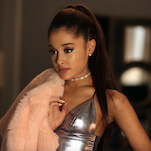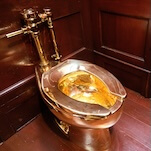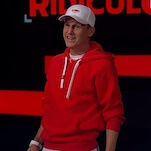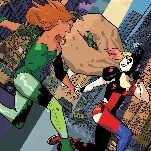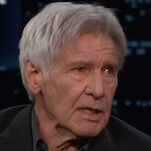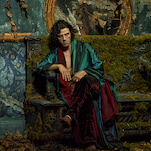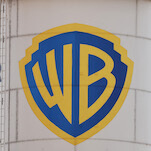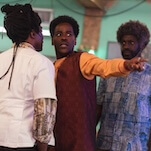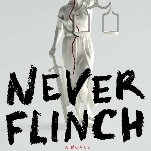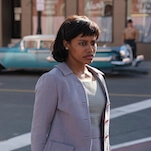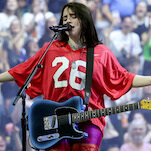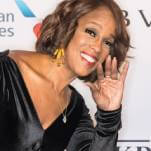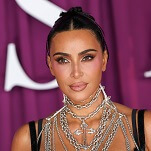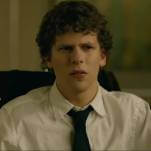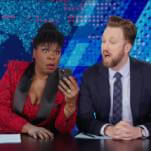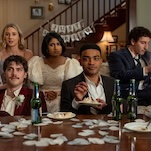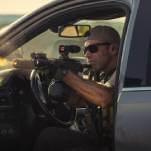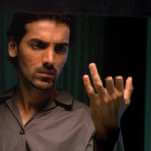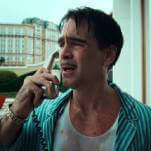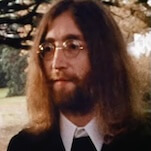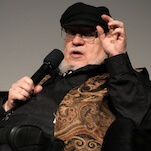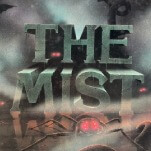Behind the glass teat: 14 worthwhile television shows about television

1. The Larry Sanders Show
Garry Shandling drew heavily on his experiences guest-hosting The Tonight Show when he co-created and starred in The Larry Sanders Show, a brilliant deconstruction of show-business artifice and the late-night talk show that doubled as one of the most penetrating, darkly funny explorations of male neuroses and sexuality this side of Philip Roth. In a performance so perfect that it seemingly inhibited his ability to play any other character, Shandling takes on the role of a narcissistic talk-show host who relies on his hard-drinking bulldog of a producer (a gleefully profane Rip Torn) to protect him from a scary outside world. He also draws on his catchphrase-happy sidekick (Jeffrey Tambor), a troubled buffoon whose affable exterior just barely hides bottomless rage and resentment. The Larry Sanders Show alternated between videotaped segments of the show-within-a-show and filmed segments of its colorful cast and crew making mediocrity happen day in and day out. Celebrity guests flocked to Larry Sanders for an opportunity to mock their public personas—most famously, David Duchovny, whose man-crush on Shandling provided some of the show’s most excruciatingly uncomfortable laughs.
2. Michael & Michael Have Issues
Ready to let your head spin? Michael & Michael Have Issues is a Comedy Central show in which The State’s Michael Showalter and Michael Ian Black play, essentially, themselves, writing a sketch show called Michael & Michael Have Issues; on that show, they talk about “themselves” and perform taped sketch comedy. Those playing along at home see the “behind-the-scenes” bickering between the Michaels (the bulk of the show), a few of the “live” bickering scenes, and all the sketches. Though the show-within-a-show seldom becomes a plot point, it provides a nice backdrop for the tension between the Michaels; they’re forced to work in such tight confines, competing their underlings’ adoration, that it’s no wonder they love/hate each other. This may be the best vehicle for Showalter and Black’s passive-aggressive comedy yet.
3. The Dick Van Dyke Show
Dick Van Dyke wasn’t a film or TV star when he got his eponymous series, but executive producer Sheldon Leonard plucked him from obscurity to star in one of the first situation comedies about television. His character works as a writer for The Alan Brady Show, a variety hour run as a dictatorship by an egotistical comic played (mostly in absentia) by the show’s creator, Carl Reiner. When Van Dyke isn’t at home tripping over ottomans and buttering up wife Mary Tyler Moore to get her to go along with his crazy schemes, he’s in the writers’ room thinking up gags for his boss alongside cynical veterans Morey Amsterdam and Rose Marie. At the end of the show’s fifth season, Van Dyke finally finishes the memoir that provides a framing device for the entire series, only to see it rejected by a publisher. Is this the end of our meta-television comedy? Never fear; Carl Reiner suggests that the memoir be transformed into a situation comedy, starring himself playing Van Dyke’s character. And so the cycle begins anew.
4. The Mary Tyler Moore Show
It’s a long way from Moore’s flustered, capri-sporting wife on The Dick Van Dyke Show to her groundbreaking role as an associate producer at Minneapolis’s WJM-TV on her own series. And not just because she’s the one bringing home the bacon and frying it up. As the center of a group of newsroom eccentrics, Moore held together a show about a woman doing something with her life other than looking for a man, though she did go on plenty of dates. She’s stuck with an evening newscast hosted by handsome bubblehead Ted Knight, a writer who delights in making the anchor look foolish, and an old-school newsman boss whose pride in his female protégé requires masking under a heavy layer of paternalism. Although the show’s seven seasons contain plenty of episodes only tenuously related to Moore’s job, her news-show-within-a-show remained at the heart of the show’s comedic universe, serving as the setting for such classic episodes as “Chuckles Bites The Dust.”
5. Sports Night
In the magical world of writer Aaron Sorkin, everyone is doing their best. That tack got him into some trouble with Studio 60 On The Sunset Strip, a short-lived series that treated the creation of a Saturday Night Live-like comedy series with the same dewy-eyed awe that Sorkin brought to the leaders of the free world in The West Wing, but it worked well for his first short-lived series, Sports Night. While co-anchors Josh Charles and Peter Krause deliver box scores and quips on the air, producer Felicity Huffman struggles behind the scenes to hold things together, with the help of Sabrina Lloyd and the sometimes prickly guidance of producer Robert Guillaume; it’s all in support of a Sports Center-style news broadcast, and while the whole cast is clearly committed to putting out the best show possible, what distinguishes Sports Night from Studio 60 is that Sports Night’s show is still struggling for ratings, and at heart, it’s just a couple of talking heads snarking about baseball. Sports Night flirts with the same treacle that’s always been a distinguishing characteristic of Sorkin’s work, but it’s leavened by the fact that failure is an inherent part of these characters’ lives; still, they choose to keep bringing the same dedication to their work regardless of its success, which speaks volumes about them, and about how their creator views the business of feeding the idiot box.


